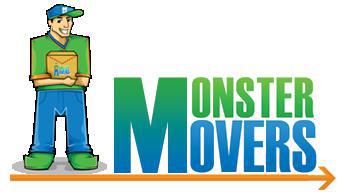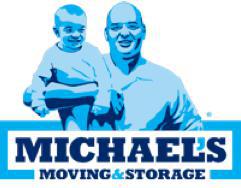Boston Movers Top Rated
(888) 787-781339 Movers in Boston
Page 1/3
Get a price and free estimate from local movers in Boston. No hassle, no stress. Wouldn't it be great? Wouldn't it be awesome if you could turn around and have all your things moved into a new place? Separate your Boston long moves movers and determine availability. When you know who your local movers will be, see which movers can discount your move. You can even choose self-service movers for pack moving.
Looking for the top moving services Boston can provide? Boston movers are easy to find, but the best movers in Boston can be a little bit trickier to locate. With so many top rated Boston moving companies, it can be a whirlwind to know which movers in Boston MA you want to pick. Boston moving services range from self-service to full-service. Your movers Boston can help you find the right type of move for you. The companies Boston MA listed on Moving Authority are reliable, qualified, and efficient. We want only the best moving company Boston has to help you with your move. Let us connect you with your movers Boston MA today!
Make the decision on a licensed American moving company to complete moves locales. Move your furniture with ease from state to state and receive a free moving estimates.
If you will need to transport a vehicle, check out the best car transporters in Boston, MA. These are best-rated movers that Boston has to offer. Do you need to place items in storage together with your relocation? We've got you covered there, too.
Looking for the top moving services Boston can provide? Boston movers are easy to find, but the best movers in Boston can be a little bit trickier to locate. With so many top rated Boston moving companies, it can be a whirlwind to know which movers in Boston MA you want to pick. Boston moving services range from self-service to full-service. Your movers Boston can help you find the right type of move for you. The companies Boston MA listed on Moving Authority are reliable, qualified, and efficient. We want only the best moving company Boston has to help you with your move. Let us connect you with your movers Boston MA today!
Like A Pro: Make Your Unpacking a Breeze
- Insert dishes sideways in the moving box instead of working on stacking them.
- Don’t pack too heavily; fill boxes only about three-quarters of the way. Consider using packing services if you are more comfortable.
- Keep your clothes on the hangers by tying them together inside a few large wardrobe boxes. You should be able to get these from your moving company.
- Start earlier than you think you need to. This way, you have time for catastrophes to come up!
4 Unique Museums in Boston You’ve Got to Visit
- USS Constitution. Do you remember the ship called “Old Ironsides” from history class? You can actually hop aboard in the Charles Navy Yard!
- Museum of Fine Arts. With paintings, sculptures, and artifacts in every genre, you can get lost here in this amazing museum.
- Museum of Science. It’s not just for kids! When you want to expand your mind, this is the spot to visit.
- The Freedom Trail. This is an outdoor museum which tracks the route of Paul Revere during the beginning of the American Revolution. When you walk the red line in the sidewalk through downtown Boston, you can walk the course of history.
Hack Your Move: How to Get That Security Deposit Back
- No time to spackle? Fill holes in the wall with a white bar of soap or chalk.
- Clean stains off of walls easily and cheaply with a sponge and some all-purpose cleaner or a magic eraser.
- Sweep and mop all floors.
- Dust all ledges and windowsills.
5 Words That Mean Something Different to Bostonians
- Dunks. This is short for Dunkin’ Donuts, which is the ONLY place for a Bostonian to get coffee.
- Sox. Not what you put on your feet, but the team that is synonymous with baseball.
- Pats. Not a kind gesture on someone’s back, but the only football team to have on your radar.
- Dot. This is the abbreviated form of “Dorchester,” which is a thriving Bostonian neighborhood.
- Wicked. To Bostonians, this word means “very” instead of “evil.”
Do you know?

- A moving company, removalist, or van line are all companies that help people as well as other businesses to move their goods from one place to another. With many inclusive services for relocation like packing, loading, moving, unloading, unpacking and arranging of items can all be taken care of for you. Some services may include cleaning the place and have warehousing facilities.
- According to the U.S. Census Bureau, 40 million United States citizens have moved annually over the last decade. Of those people who have moved in the United States, 84.5% of them have moved within their own state, 12.5% have moved to another state, and 2.3% have moved to another country.
- In the United States and Canada, the cost for long-distance moves is generally determined by a few factors. The first is the weight of the items to be moved and the distance it will go. Cost is also based on how quickly the items are to be moved, as well as the time of the year or month which the move occurs. In the United Kingdom and Australia, it's quite different. They base price on the volume of the items as opposed to their weight. Keep in mind some movers may offer flat rate pricing.
- Many people are familiar with this type of moving, using truck rental services, or borrowing similar hardware, is known as DIY moving. Whoever is renting a truck or trailer large enough to carry their household goods may obtain moving equipment if necessary. Equipment may be items such as dollies, furniture pads, and cargo belts to protect furniture and to ease the moving process.
- As most people have experienced, moving does involve having the appropriate materials. Some materials you might find at home or may be more resourceful to save money while others may choose to pay for everything. Either way materials such as boxes, paper, tape, and bubble wrap with which to pack box-able and/or protect fragile household goods. It is also used to consolidate the carrying and stacking on moving day. Self-service moving companies offer another viable option. It involves the person moving buying a space on one or more trailers or shipping containers. These containers are then professionally driven to the new location.
- There many reasons for moving, each one with a unique and specific reason as to why. Relocation services, employee relocation, or workforce mobility can create a range of processes. This process of transferring employees, their families, and/or entire departments of a business to a new location can be difficult. Like some types of employee benefits, these matters are dealt with by human resources specialists within a corporation.














